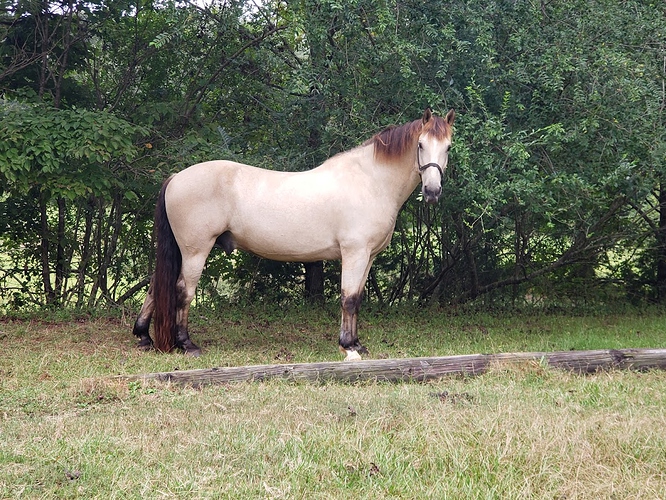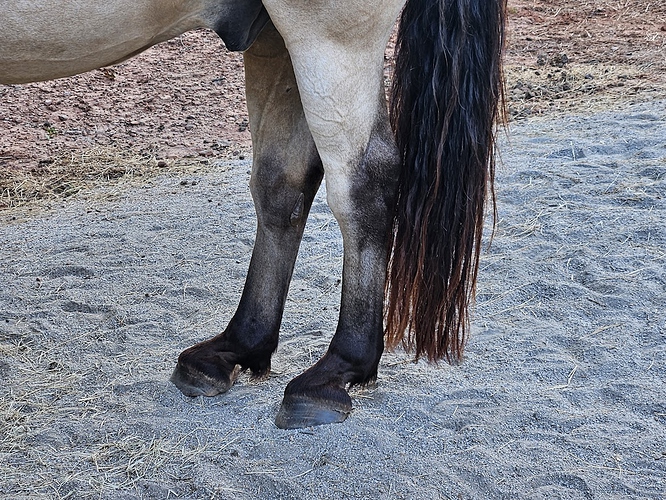I’ve seen a couple that were too late. Both pretty lame. Would not lay down. One horse also started this almost tying up behavior in the evenings. Shifted weight a lot. Sometimes would lift a hind leg kind of high and seem to get stuck like that. Periodically 3 legged like a bad cramp. (Did not have shivers, stringhalt, etc.). Went on for far too long. I am not sure what it was like for the first one on its last days (horse moved away), but for the second one, by the time the owner scheduled the appointment, one of the suspensories really let go. Horse really couldn’t walk and poor thing had to spend the day before in a stall loaded up on a lot of drugs which didn’t do enough. At the time of the appointment, needed a lot more drugs to try to walk out of the barn to a spot that the body could be out of the way and picked up. It was heartbreaking, and I was just a fellow boarder.
I also took care of another for a time who could still get up and down, fart around if he felt like it, was engaged with his buddies and people and the boss of his pasture mate. He had been a rescue with a host of issues and not rideable for a long time anyway. I believe he was eventually put down due to an unrelated infection. I worried about him (as I suppose you do caring for any super senior), but he was ok in retirement while in my care. The other horses I boarded with were very hard to witness. One I did some contracted care for (bed sores care, hand walking, bandaging, etc), and the downhill trend was obvious to me but not so much to the owner.
It sounds like you are nowhere near the bad place, and there is nothing wrong with making sure your horse doesn’t have to go through any of that by being perhaps a little early.




 So how do I judge when he’s had it, if he does xyz fine? The last two years he’s managed to choke and brake his face.
So how do I judge when he’s had it, if he does xyz fine? The last two years he’s managed to choke and brake his face.  I had the vet out for both and he just keeps pulling through.
I had the vet out for both and he just keeps pulling through.
